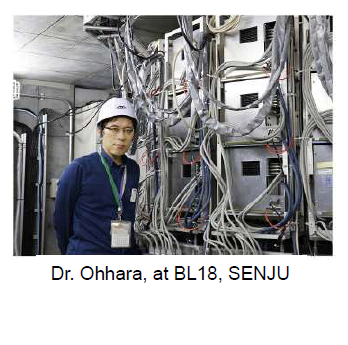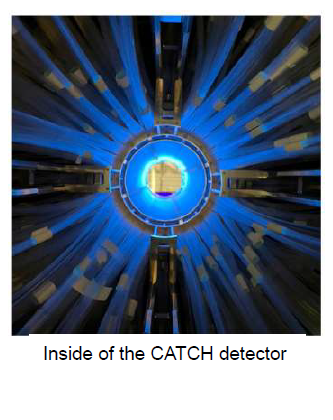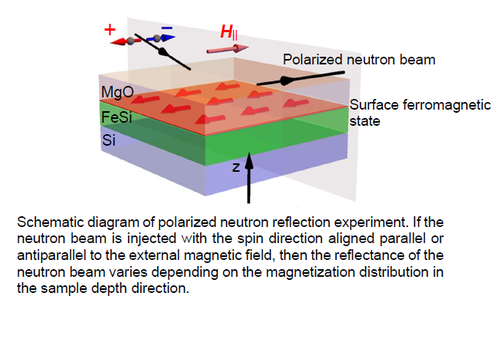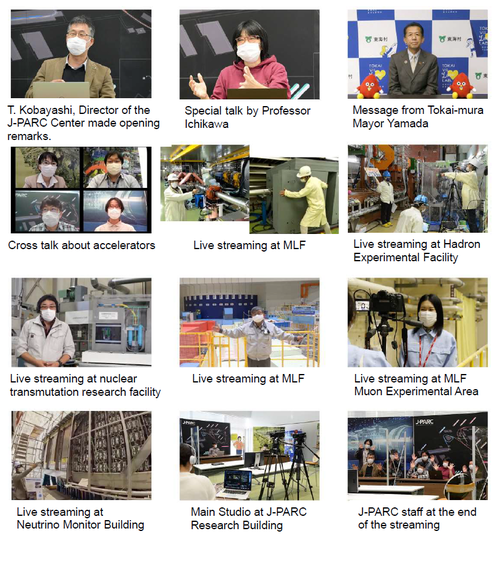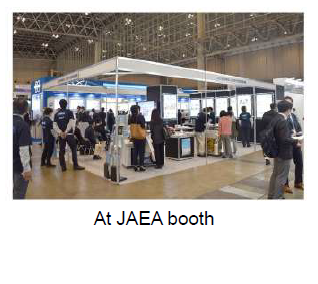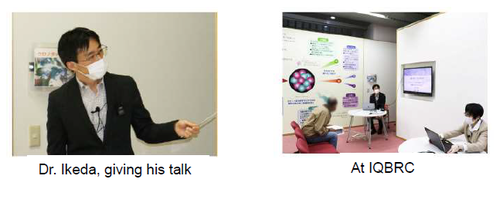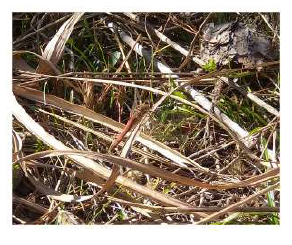J-PARC News November 2021 (Issue #199)
■Dr. Takashi Ohhara Wins Research Award from Crystallographic Society of Japan
Dr. Takashi Ohhara of the Neutron Science Section, JAEA Principal Researcher, won the FY2021 Research Award from the Crystallographic Society of Japan for "Structural & Chemical Study of Molecular Crystals based on Precise Positions of Hydrogen Atoms by Single-crystal Neutron Diffraction." This award is given to a regular member under 50, with a membership history of at least five years, and has conducted innovative crystallography research.
Dr. Ohhara has been engaged in developing and operating the single crystal neutron diffractometers at the JRR-3 reactor and the Materials and Life Science Experimental Facility (MLF), and he has improved the instruments to enable diffraction even with small samples. Finally, at the Single Crystal Neutron Diffractometer SENJU of the MLF he is responsible for, he has made single-crystal neutron diffraction measurement with samples of size 0.1 mm3 possible, which previously required large crystal samples a few mm3 in size. Dr. Ohhara also has elucidated various molecular crystals' reactions and properties by using the positions of hydrogen atoms in crystals determined with high precision and reliability by single-crystal neutron structure analyses. And he also facilitated single-crystal neutron structure analysis of molecular crystals, of which there were almost no previous examples in Japan.
■Precise Measurement of Scattering of Strange Particles and Protons at J-PARC Hadron Experimental Facility: Major Progress in Elucidation of Nuclear Force that Forms Atomic Nucleus (November, 8, Press Release)
The nuclear force acts between the protons and neutrons (collectively called nucleons) composing the atomic nucleus. This is a complex force which produces the atomic nucleus by, on average, binding the nucleons together through attraction, but it also exerts strong repulsion when the distance between nucleons is short. This allows the atomic nucleus to exist without breaking down. At short distances where the force is repulsive, the quarks which make up the nucleons likely make an important contribution, and the key to elucidating the detailed mechanism is research investigating the forces acting on “Strange Particles” called hyperons, i.e., particles produced by accelerators that are similar to nucleons but contain strange quarks. As one such technique, the produced hyperons are collided with protons (hydrogen nuclei), and measurements are taken to determine how easily scattering occurs, and in which directions. However, due to extremely short lifetime of a hyperon, its scattering before the decay is extremely rare, so to obtain precise results, scattering events have to be accumulated by producing numerous hyperons.
An international experiment group led by Associate Professor Koji Miwa of Tohoku University has successfully achieved, for the first time in the world, high-statistics and high-precision measurement of angular distribution for the negatively charged sigma hyperon (Sigma-Minus) proton scattering. This was achieved by producing Sigma-Minus in quantities about 100 times greater than previous experiments at the J-PARC Hadron Experimental Facility, and developing new detector which can be operated to measure the events successively occurred such as a scattering, reactions, and decays, under high couniting-rate environment. It was confirmed that Sigma-Minus scatters more easily in the forward direction, as predicted by theoretical calculations, especially that explicitly incorporating the quark effects, but there are considerable differences between the experimental data and the theoretical calculations at present. This research provides hints for improving theoretical calculations, and dramatically develop our understanding of the nuclear force. Progress of the understanding of the nuclear force, in conjunction with research on hypernuclei (atomic nuclei containing hyperons), may help to resolve the mystery of how diverse atomic nuclei were created during the history of the universe, and clarify unknown forces acting inside neutron stars.
■ New Topological Surface State in Iron-Silicon Compounds: Realization of Spintronic Functionality Using Commonplace Elements (November 18, Press Release)
Spintronics is attracting attention as a technology for overcoming the limitations of contemporary electronic devices employing the charge of electrons. In spintronics, the spin of the electron (its magnetic property) is used in addition to charge. In the topological insulators discovered in recent years, a special spin state appears at the surface or interface of a material, deriving from the topology (geometrical state) of the electron state inside a crystal, and this exhibits spintronic functionality. However, in existing materials, that state derives from the strong spin of heavy elements, and this has problems in terms of the rarity and toxicity of heavy elements.
A team including Yusuke Otsuka (at the time a graduate student) and Instructor Naoya Kanazawa of the University of Tokyo showed, through experiments and calculations, that in a thin film of the compound FeSi composed of iron (Fe) and silicon (Si)—two elements abundant on the earth—the surface, unlike the crystal interior, exhibits a ferromagnetic metal state (i.e., a state with magnetic properties that allows the flow of current), and this showed that the surface is in a new surface state different from a topological insulator. Through a polarized neutron reflection experiment using J-PARC's Polarized Neutron Reflectometer (BL17, SHARAKU), the team showed that a ferromagnetic state exists only in the first few atom layers of the surface (approx. 0.3 nm) (see figure below). It was also shown experimentally that the direction of magnetization of the FeSi surface inverts due to the flow of current. This can be used as a technique for high-speed electrical control of nonvolatile memory which records information using the direction of magnetization. These results provide hints for developing the functionality latent in compounds of commonplace elements, and this has the potential to save power and enhance functionality of electronic devices.
■ J-PARC Open House 2021 Held Online (November 13)
This year's J-PARC open house was held online, like last year. There was live video from the MLF Experimental Hall, nuclear transmutation research facility, MR Accelerator, Hadron Hall, and Neutrino Monitor Building. In addition to talks by researchers, content included interior video of accelerators that is not normally shown to the public. Live streaming was achieved through a team effort by about 50 staff members.
Following the keynote address "Exploring the Mysteries of Elementary Particles and the Universe with Neutrinos" by Professor Atsuko Ichikawa of Tohoku University, a representative of the T2K Experiment Group, there was a feature called "Ask Questions of Researchers Active on the World Stage!" Participants were limited to Japanese college of technology and high school students who applied from all over Japan. They participated online, and the question-and-answer session ran over the scheduled time. Thank you very much for watching.
This event can be accessed as follows.
YouTube: https://www.youtube.com/watch?v=HqIma-BMlVo
nico nico Live: https://live.nicovideo.jp/watch/lv334216277
■ Exhibition at JASIS 2021 (November 8 – 10, Makuhari Messe International Exhibition Hall)
JASIS, organized by the Japan Analytical Instruments Manufacturers' Association and the Japan Scientific Instruments Association, is one of the largest exhibitions in Asia of cutting-edge scientific and analysis systems. Here, manufacturers of analytical and scientific instruments all come together in one venue.
The MLF and JRR-3 research reactors are diverse facilities for analyzing the arrangements of atoms and molecules in materials, and their behavior, by using neutrons to complement X-rays and electron beams. Results using these facilities were presented, as well as information on the facility sharing system of the JRR-3 and MLF, and the activities of the J-JOIN facility utilization liaison.
Over three days, there were about 730 visitors to these JAEA booths, and there was an active exchange of questions.
■ J-PARC Hello Science "Neutrons for Finding Hydrogen" (October 29)
The venue was switched this time to the Ibaraki Quantum Beam Research Center, IQBRC. The event was concurrently held online, as before. The instructor was Dr. Kazutaka Ikeda of the Neutron Science Section, and there were about 20 participants.
Hydrogen was the first element created in the universe, and it is expected to play a key role in developing new energy and functional materials for a decarbonized society. For that purpose, materials will be developed to enable efficient storage and easy transport of hydrogen, and there will be a need to investigate where hydrogen is located inside a material. However, hydrogen has the smallest number of electrons, and its location cannot be determined by irradiating with X-rays. Therefore neutrons are used because they reveal the material structure regardless of the number of electrons. Thus, Dr. Ikeda explained the method where irradiation is done with some of the world's highest intensity neutrons using the High Intensity Total Diffractometer (BL21 NOVA) of the MLF at J-PARC. He also introduced structural analysis of new hydrogen storage materials, and research on the mechanisms of hydrogen absorption/desorption reaction in hydrogen storage materials, employing this method to directly observe hydrogen in materials.
■Sanpo-michi #17: Red dragonfly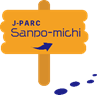
I found a red dragonfly (an Autumn darter, called "Akiakane" in Japanese) on the walking path at J-PARC. Apparently there has been a sharp decrease in the numbers Autumn darters in Tokai Village in recent years, and this year we worried that we might not see even one.
The Autumn darter is well known for its seasonal, long-distance migrations. Its passes the winter as an egg, and becomes an adult around the rainy season. It immediately migrates to the mountains to avoid the heat, and matures while in the cool mountain country. In this area, favored mountains are perhaps Mt. Takasuzu or Mt. Yamizo. They return to the flatlands around October, when it is cooler. And that's when we finally see them. We spotted them this year on November 12, so it seems fall has come a little later than usual this year.

